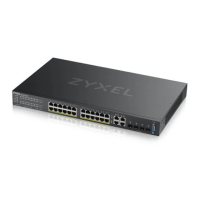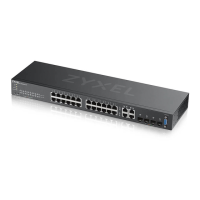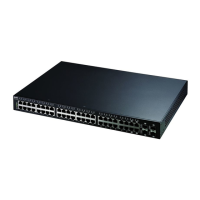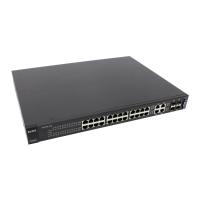Chapter 39 OAM
GS2220 Series User’s Guide
350
Unidirectional This field indicates whether or not the port can send information PDUs to transmit fault
information when the receive path is non-operational.
Remote loopback This field indicates whether or not the port can use loopback control PDUs to put the
remote device into loopback mode.
Link events This field indicates whether or not the port can interpret link events, such as link fault and
dying gasp. Link events are sent in event notification PDUs and indicate when the number
of errors in a given interval (time, number of frames, number of symbols, or number of error
frame seconds) exceeds a specified threshold. Organizations may create organization-
specific link event TLVs as well.
Variable retrieval This field indicates whether or not the port can respond to requests for more information,
such as requests for Ethernet counters and statistics, about link events.
Max. OAMPDU
size
This field displays the maximum size of PDU for receipt and delivery.
Local Client/Remote Client
Operational status
Link status This field indicates that the link between the Switch port and a connected IEEE 802.3ah-
enabled remote Ethernet device is up or down.
Info. revision This field displays the current version of local state and configuration. This two-octet value
starts at zero and increments every time the local state or configuration changes.
Parser state This field indicates the current state of the parser.
Fo rwa rd: The port is forwarding packets normally.
Lo o pb a c k: The port is in loopback mode.
Disc ard: The port is discarding non-OAM PDUs because it is trying to or has put the remote
device into loopback mode.
Discovery state This field indicates the state in the OAM discovery process. OAM-enabled devices use this
process to detect each other and to exchange information about their OAM
configuration and capabilities. OAM discovery is a handshake protocol.
Fa ult: One of the devices is transmitting OAM PDUs with link fault information, or the
interface is not operational.
Ac tive Se nd Lo c a l: The port is in active mode and is trying to see if the remote device
supports OAM.
Pa ssive Wa it: The port is in passive mode and is waiting for the remote device to begin
OAM discovery.
Se nd Lo c a l Re m o te : This state occurs in the following circumstances.
• The port has discovered the remote device but has not accepted or rejected the
connection yet.
• The port has discovered the remote device and rejected the connection.
Se nd Loc al Re mo te O K: The port has discovered the remote device and has accepted the
connection. In addition, the remote device has not accepted or rejected the connection
yet, or the remote device has rejected the connected.
Se nd Any: The port and the remote device have accepted the connection. This is the
operating state for OAM links that are fully operational.
Remote Client
MAC Address This field displays the MAC address of the IEEE 802.3ah-enabled remote Ethernet device
that is connected to the Switch.
Vendor(oui) This field displays the Organizationally Unique Identifiers (OUI) representing the vendor of
the IEEE 802.3ah-enabled remote Ethernet device that is connected to the Switch.
Table 179 Advanced Application > OAM Status > OAM Details (continued)
LABEL DESC RIPTIO N

